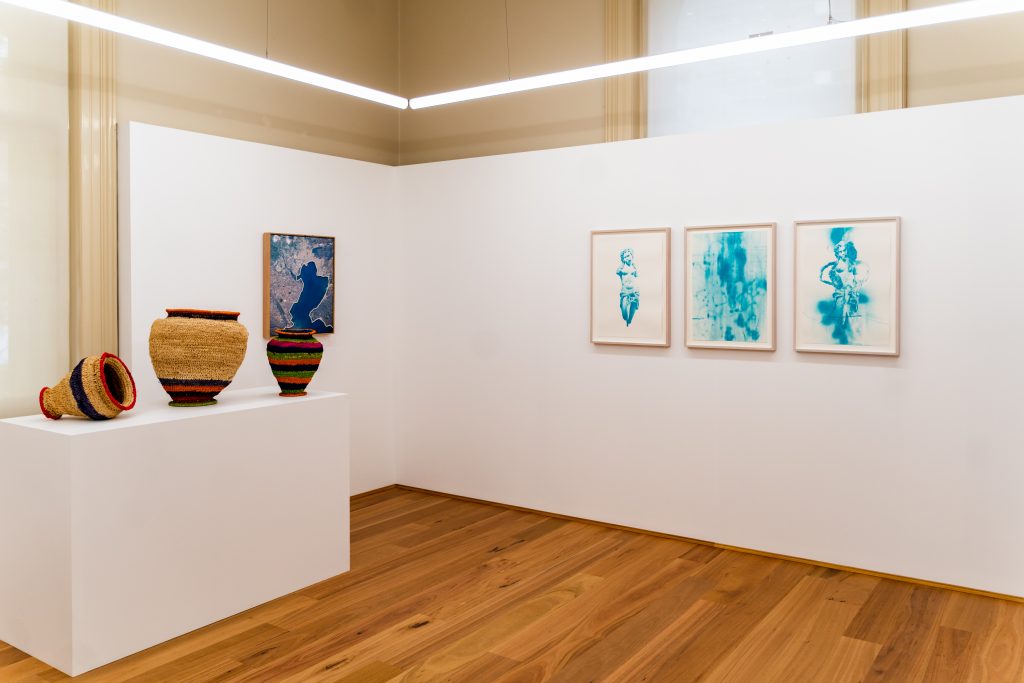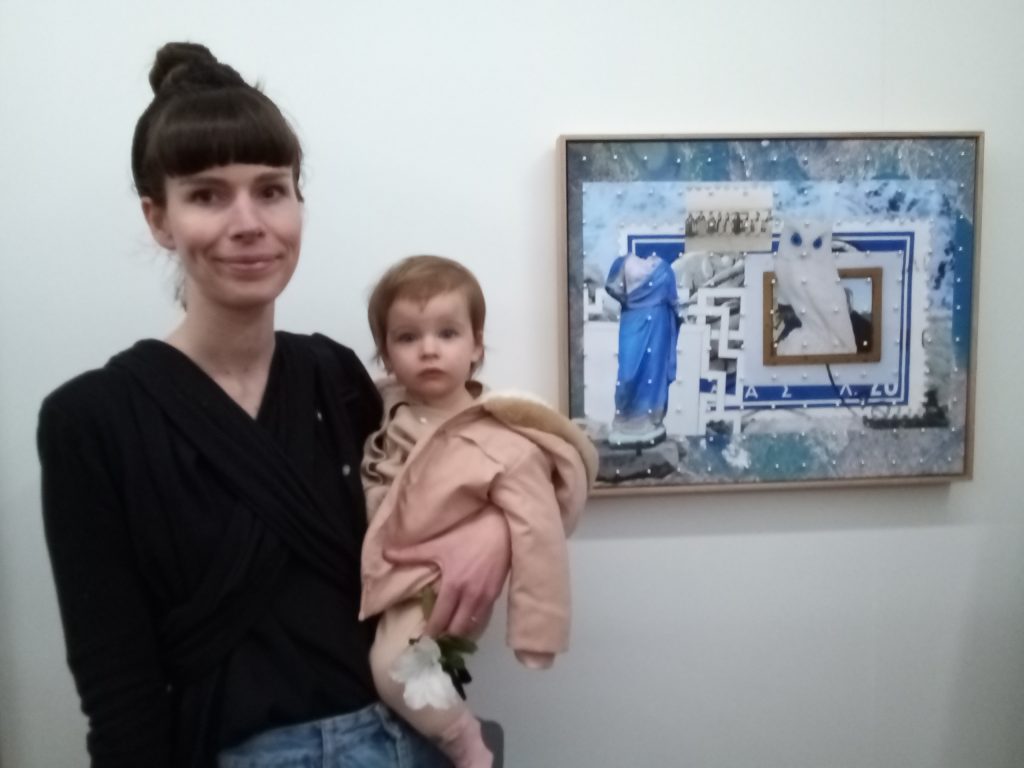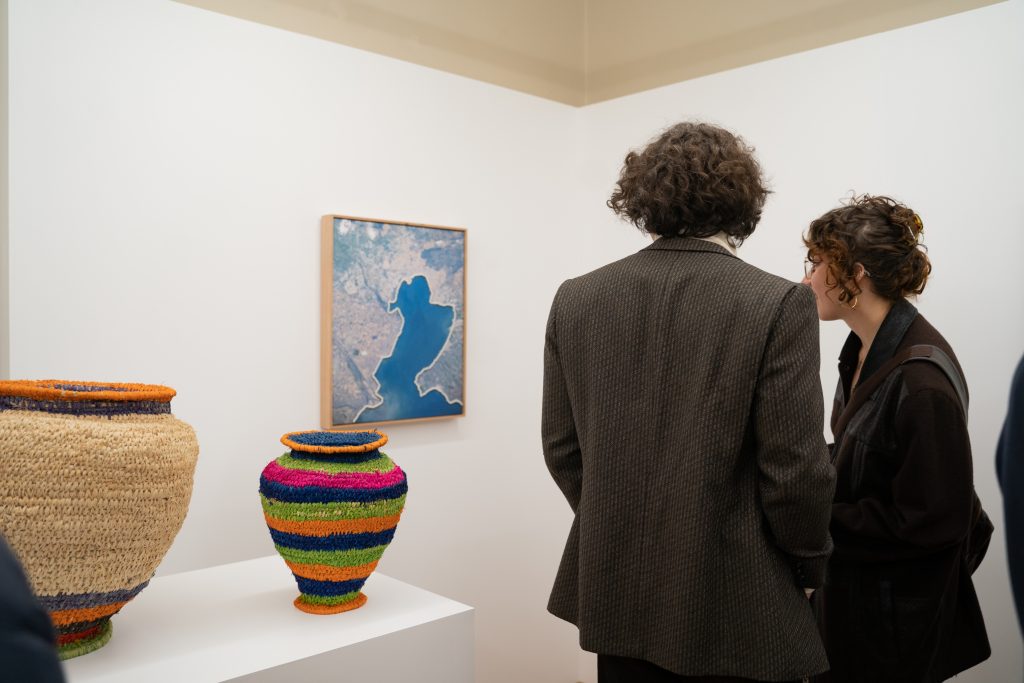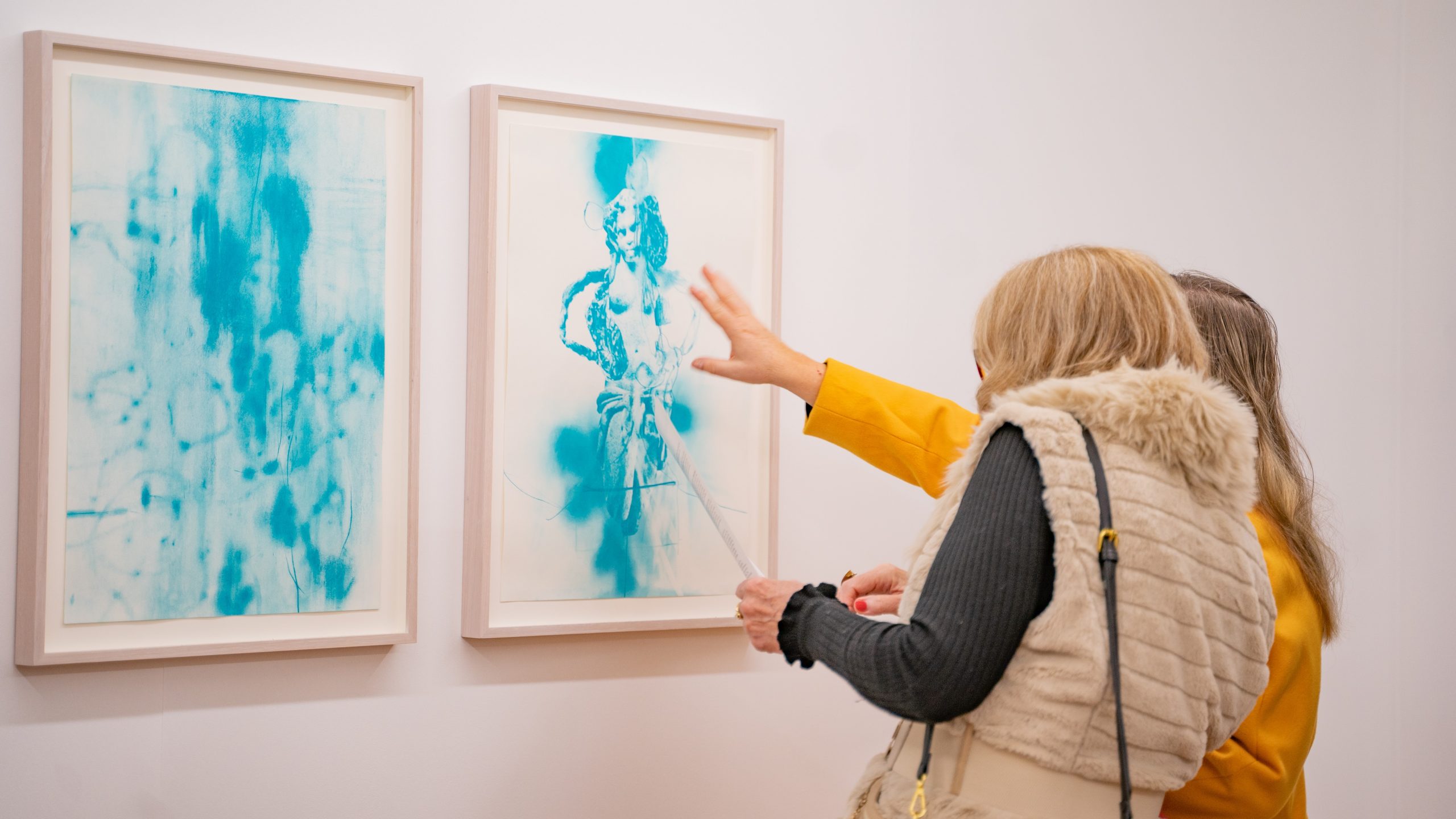By Mary Sinanidis.
Like Greek culture itself, the Hellenic Museum – housed in Melbourne’s Royal Mint – has a fighting spirit.
Thumbing its nose at the controversy surrounding its ill-fated move from The Royal Mint to the Land Titles building, it instead knocked down a wall to reveal a tiny cube of a room which it packed with the work of five Australian artists, at different stages of their careers, influenced by Hellenistic culture and ideals: Ann Debono, Rob McLeish, Stephen Benwell, Grace Wood and Ngilan Margaret Dodd.
“Our museum has grown just a little bit,” Hellenic Museum CEO Sarah Craig said, during the opening of The Sun at Midnight – a new exhibition named after the natural phenomenon that occurs in poles during summer solstice when the midnight sun remains visible.

Curator Adam Stone points to indigenous artist Margaret Dodd who used traditional weaving techniques to create her signature baskets which resemble the ancient Greek hydria.
“I think that is such a special artist to include in this exhibition because you have these two ancient cultures existing in different parts of the world but then infused in these contemporary art objects,” Mr Stone told The Greek Herald, adding that the other four artists are just as special in their own way.
Standing in front of her artwork with her baby in tow, Melbourne-based artist Grace Wood remembers the Cycladic island of Folegandros with peaks of holiday memories interposed between the layers of her artwork.
“This photo and the owl are from a cemetery, which was on top of a hill and was more about life than death,” she said of her work, inspired by Greek tradition, pearls and Hellenic marble.

But beyond beauty, Mr Stone said Wood “looks at ideas of elitist art history and challenges some of these images that we see and recontextualises them through a feminist lens, while someone like Stephen Benwell, who is quite active, shows the link between classicism and his practice in the way he makes small sculptures based on statutory and we have someone like Rob McLeish whose works on display here are part of a body of work called distortions which are a suite of 60 monochromatic aqua pencil drawings.”
The conversation moves to where inspiration stops and cultural appropriation begins. Asked about Adam Newman’s Parthenon-inspired “Temple of Boom” at the NGV, Mr Stone states he cannot comment.

“I don’t know. It’s probably not a context I am particularly familiar with because it is not my personal heritage,” he said.
“It’s a tricky thing because cultural appropriation is a topic that is contentious at the moment. I think because ancient Greece is perhaps a beginning of the liege of western art it can be seen within that context. And a lot of people, when they think of the beginning of western art, start at the Renaissance but it goes back even further than that. When it is viewed in that context, the ownership question is a tricky one.”
Mr Stone said he could have easily found 25 Australian artists inspired by Greek art, but small space was the qualifier. However, there’s more to come in that cubed room – small like Greece itself but with enough thought to feed the world.
The Hellenic Museum is at 280 William Street, Melbourne.

